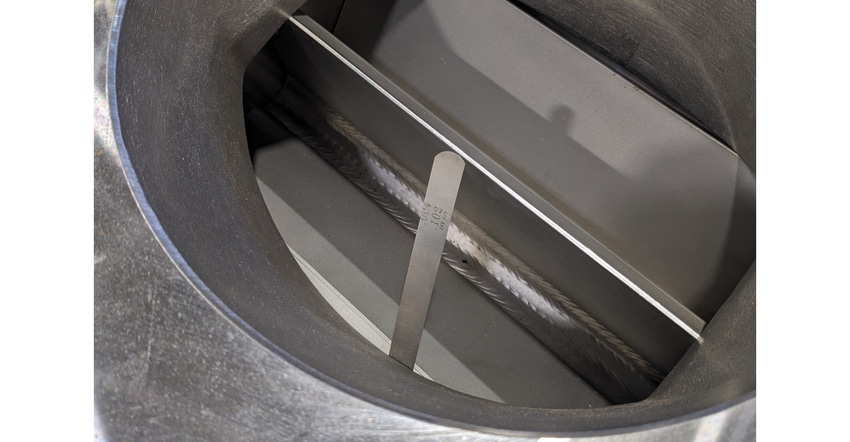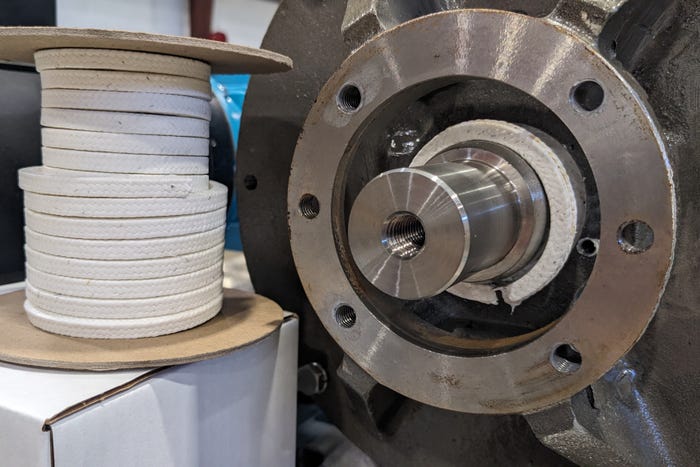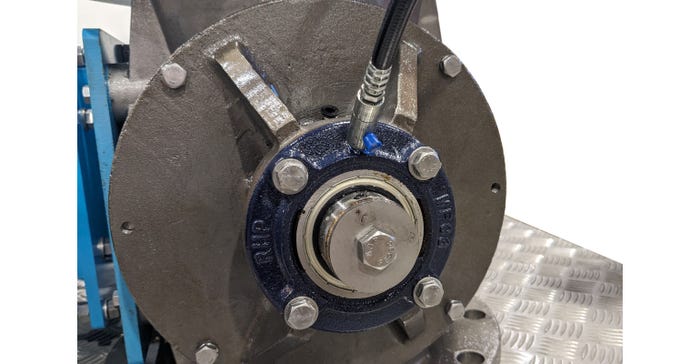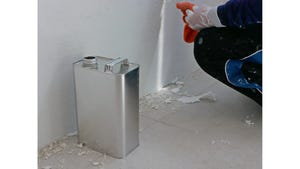Rotary Airlock Valve Maintenance & Safety
To prevent costly down time and repairs, it is vital to perform routine maintenance on your rotary airlock valve.
April 18, 2024

Rotary airlock valves are a critical component in many material handling systems. From dust collectors to pneumatic conveying systems, rotary airlocks not only control the feed rate but also minimize air leakage between equipment above and below the valve with differing levels of pressure or vacuum. In dust collection systems, the rotary airlock allows continuous product discharge without having to turn off the vacuum to dump the accumulated material. In pneumatic conveying systems, rotary airlocks allow the continuous introduction of material into a pressure or vacuum stream with minimal loss of air.
To prevent costly down time and repairs, it is vital to perform routine maintenance on your rotary airlock valve. Before proceeding, it is imperative that all maintenance personnel and operators are aware of their hazards. A rotor inside the valve is rotating with tight tolerances between the rotor vanes and the housing. These rotating vanes can easily sever fingers and break bones through both the inlet and the outlet. It is imperative that proper tag out and lock out procedure is followed to prevent injury. Never attempt to work on a rotary airlock valve while it is running. Additionally, make sure that it is impossible to reach the rotating rotor via the inlet or outlet through the equipment before or after the rotary valve. If the inlet or outlet flange is exposed (such as feeding into a waste receptacle) then make sure finger guards are installed to prevent accidental injury. With the valve powered off and locked out, routine maintenance can take place.
Inspection of Internal Clearances
One of the most critical aspects of valve maintenance is inspection of the internal clearances between the rotor and housing. The whole principle of the rotary valve to act as an airlock is the tight tolerances between the rotor and housing. Typical clearances are 0.004 to 0.006 in. or roughly the thickness of human hair. These tight tolerances allow product to pass from the inlet to the outlet while minimizing air leakage. Clearances are checked through the inlet and/or outlet throats with the rotor still installed inside the housing. Using a set of feeler gauges, tolerances can be checked and tracked for wear. As the tolerances increase over time, the leakage rate will increase causing more air leakage, lower throughput capacities and perhaps the stop of product discharge entirely. When tolerances have become too loose, it may be possible to raise the rotor tips if the valve has an adjustable rotor or replace the tips with new ones. If the rotor has fixed vanes, then the edges may be built up and re-machined – or replace the rotor entirely.
Bear in mind that there are instances where the rotor clearances may be greater than the standard 0.004 to 0.006 in. When handling hot materials or when the valve is exposed to hot gases, the rotor clearances will be increased by the manufacturer to allow for thermal expansion. Otherwise, the rotor may squeal or even lock up under the higher temperature. For systems requiring National Fire Protection Association (NFPA) specifications, the rotary valve acts as a flame barrier and explosion protection. In these instances, checking and maintaining rotor clearances is imperative. Typically, this clearance is less than 0.0079 in. as specified by the NFPA. If there is any doubt as to what the clearances should be, check with the valve manufacturer.
Check the Rotor Pockets
While inspecting the valve internals, also check that the rotor pockets are clear and not packed with material. Any material that has built up on the rotor will reduce the valve capacity and hence the discharge rate of material. Also check that the rotor vanes are not bent or damaged. Any such damage may create a contact point between the rotor and housing which will lead to squealing or even valve seizure. If the rotor has adjustable tips, check that none of the tips are missing and that the fasteners holding the rotor tips in place are secure. If the rotor tips need adjusting because they have become loose or worn, this can be accomplished using feeler gauges between the rotor tip and housing.
How do the internal surfaces of the body bore and end cover faces appear? These should be smooth machined surfaces. Any grooves, scoring or pitting would indicate wear and/or corrosion. If the body and end covers have become worn, then air leakage will increase potentially to the point where the rotary valve is no longer able to maintain an airlock. If that is the case, the housing may need reworking or replaced.

Repacking shaft seals (image courtesy of Carolina Conveying Inc.)
Check the Shaft Seals and Bearings
Another vitally important aspect of properly maintaining a rotary airlock is attention to the shaft seals and bearings. The rotor shaft extends out through the housing to bearings on opposite sides. This is a point where without proper care, product can leak out creating not only a mess but fouling the bearings. At the first sign of leakage, the problem should be addressed. Shaft seals most commonly consist of several rows of packing that wrap around the shaft and are compressed via a gland follower. Shaft seals may also have air purge, various types of lip seals or even mechanical seals. To stop the leakage, typically requires replacing the packing, cleaning any air connection lines, and cleaning the shaft. The valve manufacturer will be able to provide information on the type of seal system for the valve and specifics of any required replacement parts.

Greasing bearings (image courtesy of Carolina Conveying Inc.)
Bearings are critical for rotary airlock valves as they keep the valve centered and properly rotating withing the tight tolerances noted above. If the bearings fail, the rotor will begin rubbing against the housing internals causing much noise or even catastrophic failure. Bearings may be sealed for life or have a grease fitting for periodic lubrication. It is especially important to inspect that the bearings rotate freely if you have shaft seal leakage, as the material may work into the bearings and cause them to fail. For bearings with a grease fitting, periodic lubing will insure a long bearing life.
Inspect the External Components
Another aspect of maintaining your rotary airlock valve is the external components. This will typically include a gearbox and a chain drive. Keeping both properly oiled and lubricated will help prevent costly breakdowns. Gearboxes usually have sight glasses and/or ports where the oil level can be checked. Keeping the roller chain lubricated will minimize wear on the sprockets, as will insuring proper alignment between the two sprockets and chain tension. Chain that is too tight will cause premature wear. Chain that is too loose is likely to disengage with the sprockets and fall off. Some rotary valves in lieu of having a chain drive have a gearbox direct couple to the rotor shaft. In those cases, check for proper alignment and inspect the coupling link for wear.

Checking chain tension (image courtesy of Carolina Conveying Inc.)
Spare Parts
As often a key component in any system, rotary airlock valve spare parts on hand are vital to keeping your plant up and running. As a minimum, spare parts should include the bearings and shaft seal rebuild kits. Other items to consider are a replacement rotor, rotor tips and drive components. In critical applications where down time must be minimal, an entire spare rotary valve may be the best option to ensure your plant stays up and running.
Preventative Maintenance
Lastly you may be wondering how often preventative maintenance should occur. This will greatly depend on the severity of conditions the valve is exposed to. Abrasive products under higher pressure differentials will cause the rotor clearances to wear out more quickly. Dusty and corrosive environments will require mechanical aspects of the valve such as the gearbox and chain drive to receive more frequent attention. As a minimum, a yearly inspection and evaluation of the rotary airlock should occur. But in more severe duty applications, the rotary valve may need inspection on a monthly basis.
Paul Golden is manager, Carolina Conveying Inc. (Canton, NC). For more information, call 828-235-1005 or visit carolinaconveying.com.
About the Author(s)
You May Also Like



